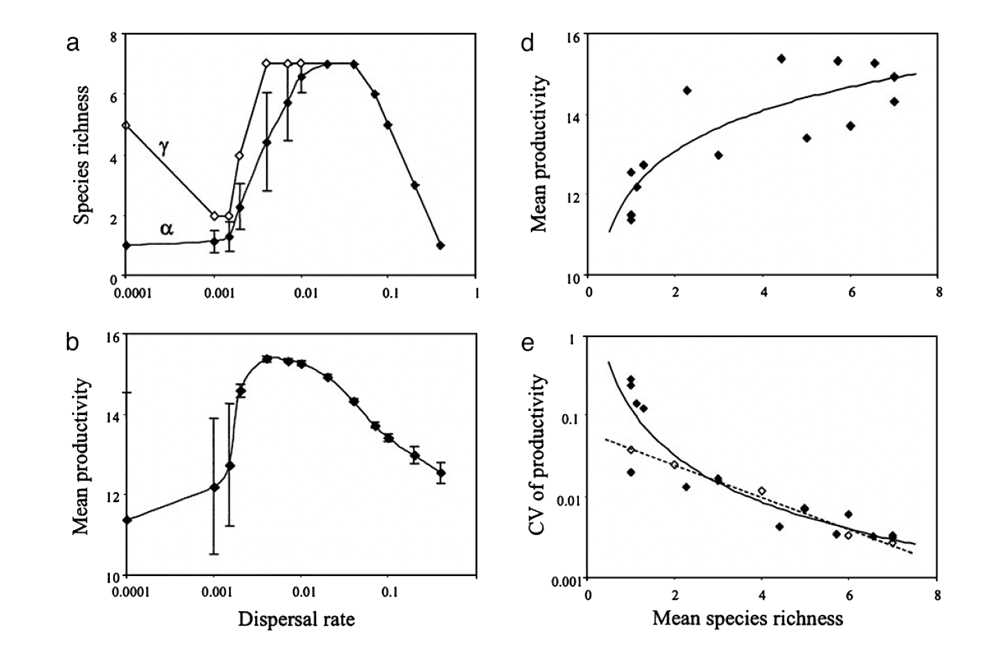BIODIVERSITY AS SPATIAL INSURANCE IN HETEROGENEOUS LANDSCAPES
Loreau M., Mouquet N. and Gonzalez A. (2003).
PNAS, 100, 12765-12770, doi:10.1073/pnas.2235465100
Key message : We propose that biodiversity provides spatial insurance for ecosystem functioning by virtue of spatial exchanges among local systems in heterogeneous landscapes. We explore this hypothesis by using a simple theoretical metacommunity model with explicit local consumer–resource dynamics and dispersal among systems. Our model shows that variation in dispersal rate affects the temporal mean and variability of ecosystem productivity strongly and nonmonotonically through two mechanisms: spatial averaging by the intermediate-type species that tends to dominate the landscape at high dispersal rates, and functional compensations between species that are made possible by the maintenance of species diversity. The spatial insurance effects of species diversity are highest at the intermediate dispersal rates that maximize local diversity. These results have profound implications for conservation and management. Knowledge of spatial processes across ecosystems is critical to predict the effects of landscape changes on both biodiversity and ecosystem functioning and services.
